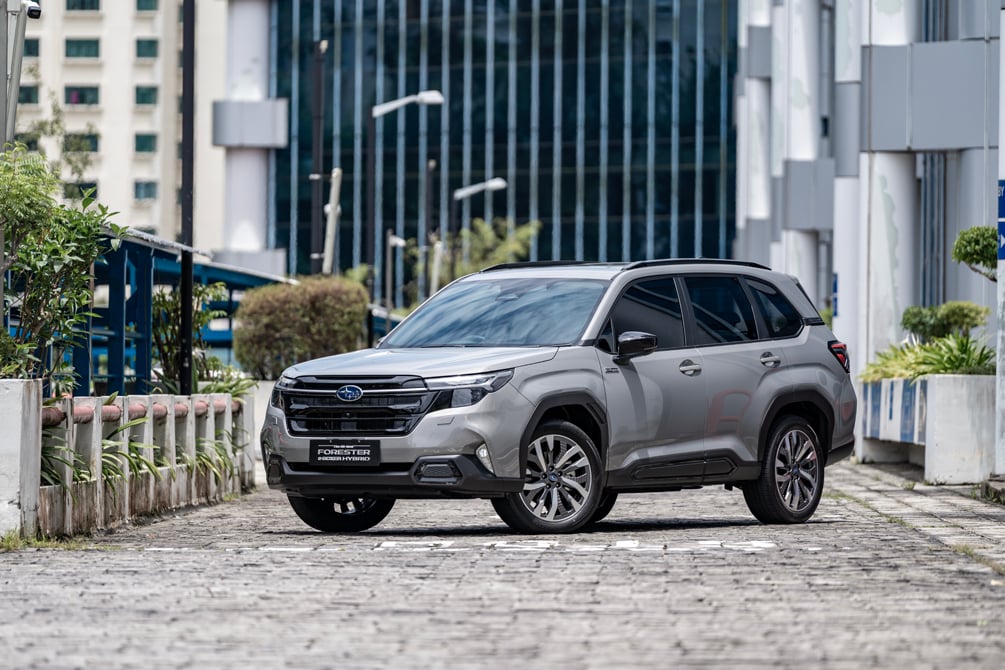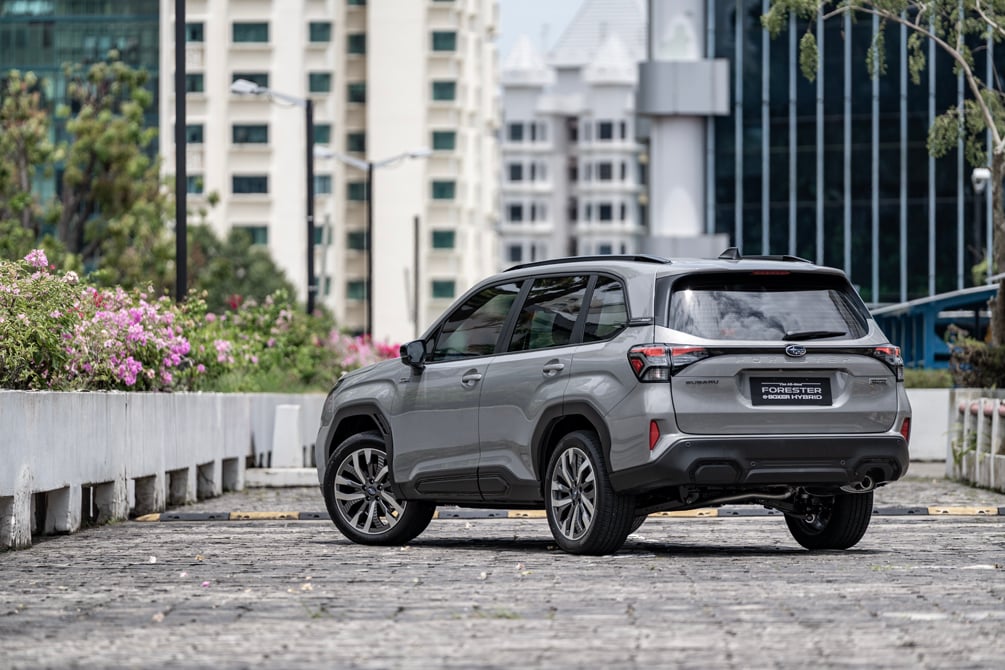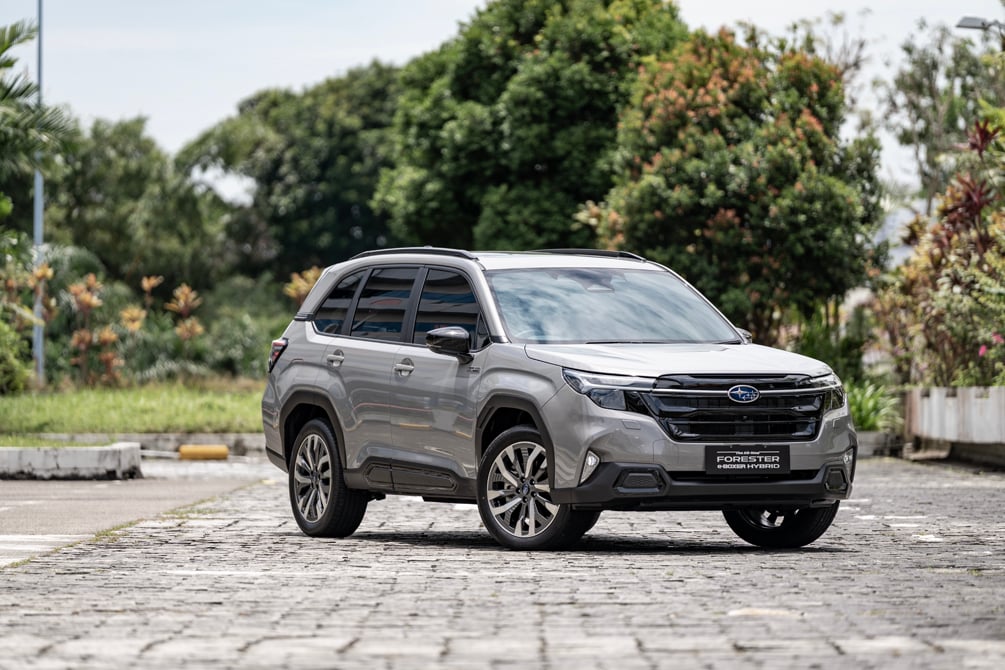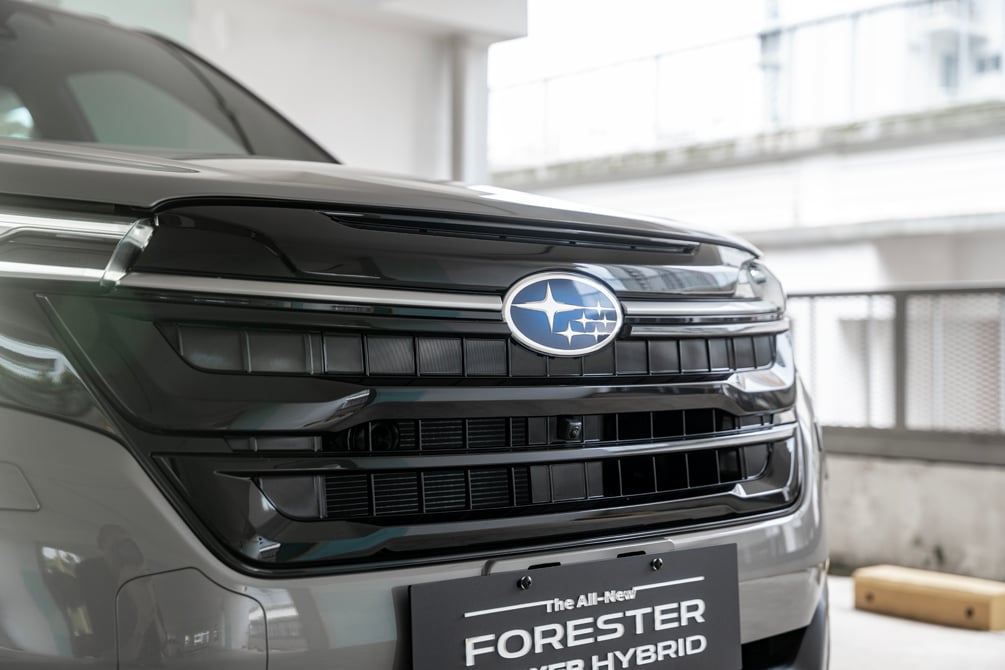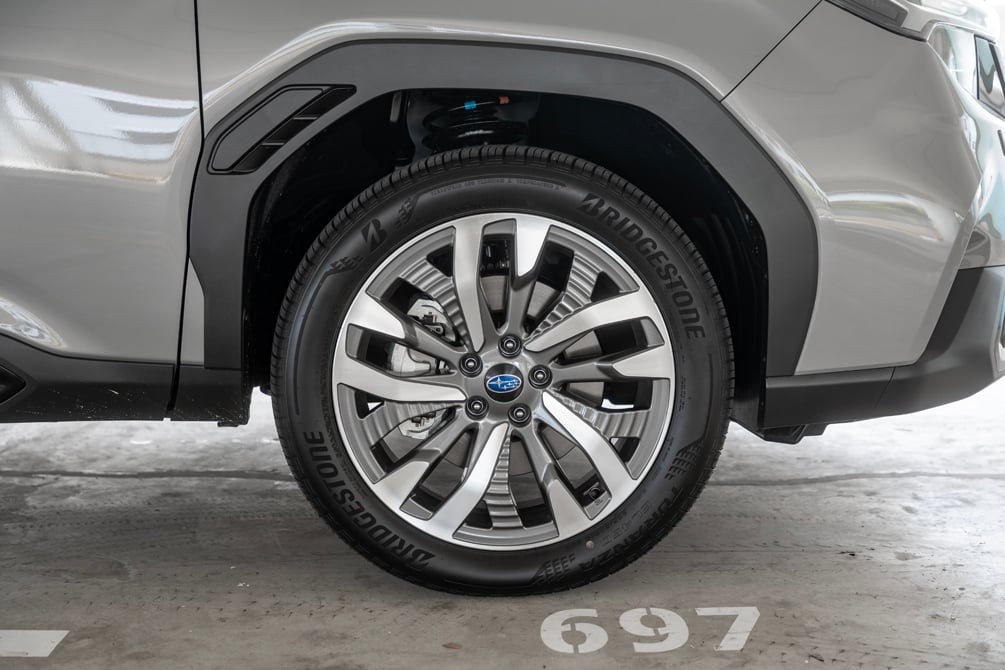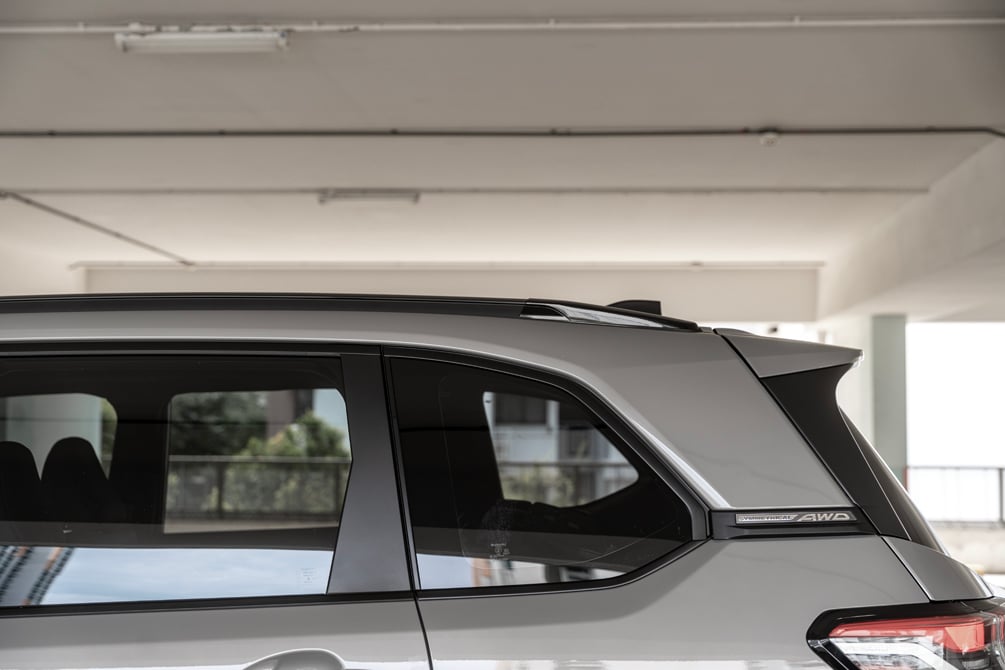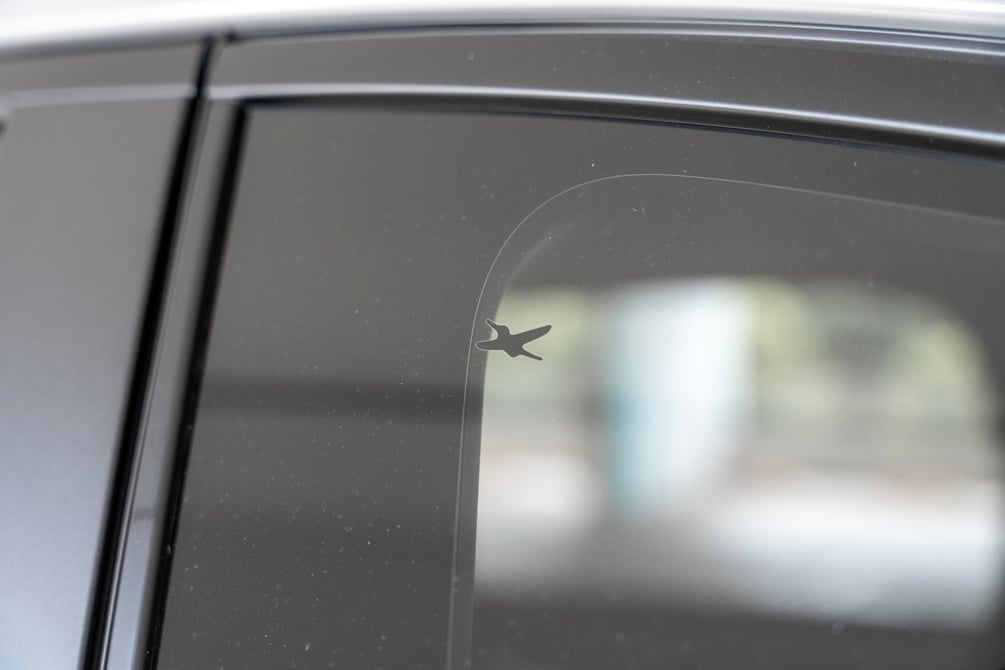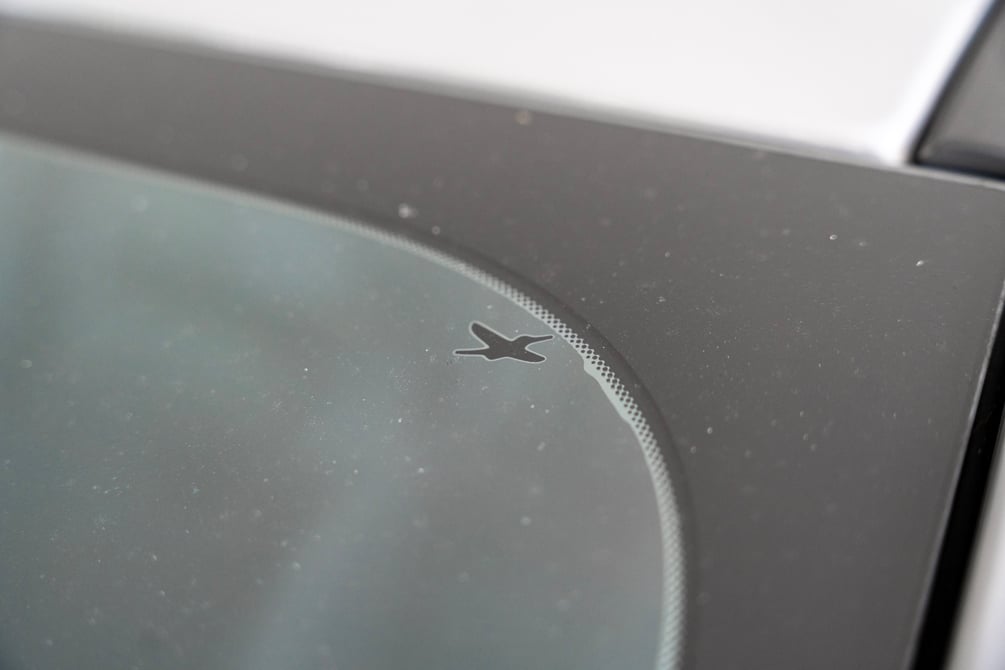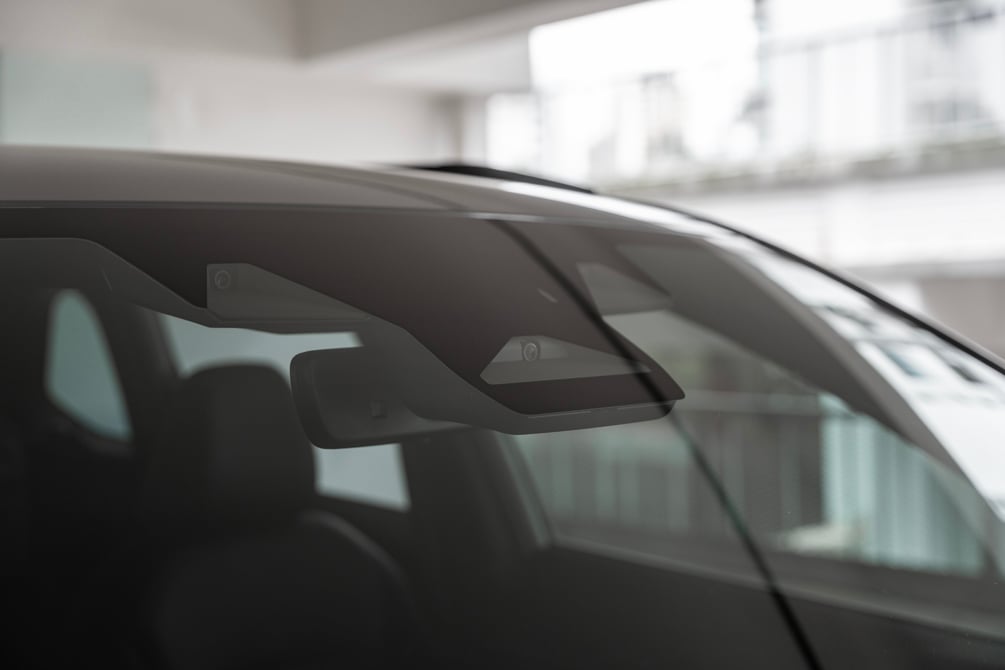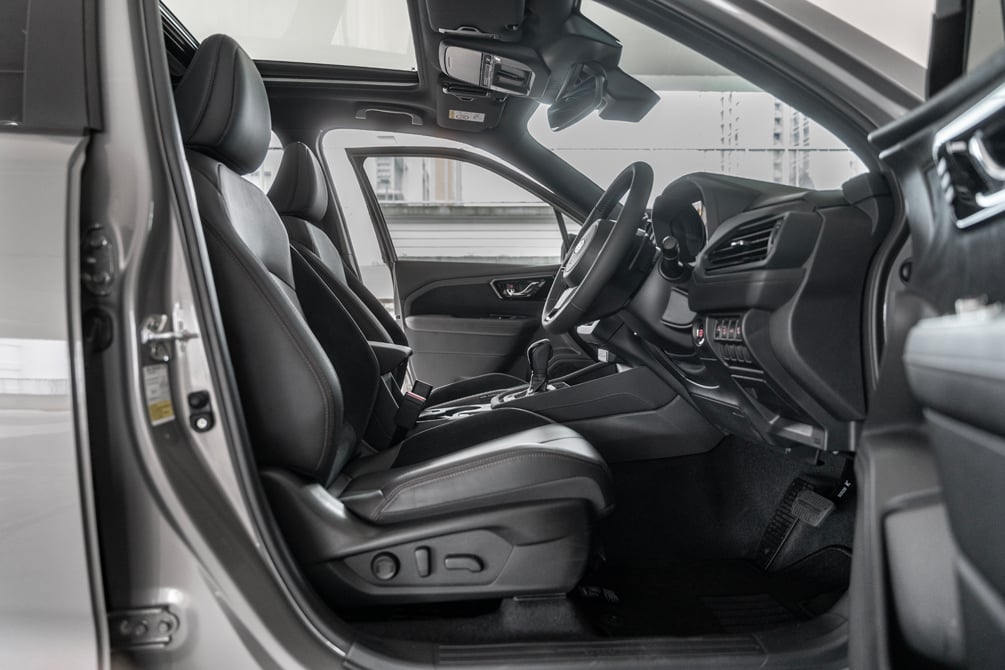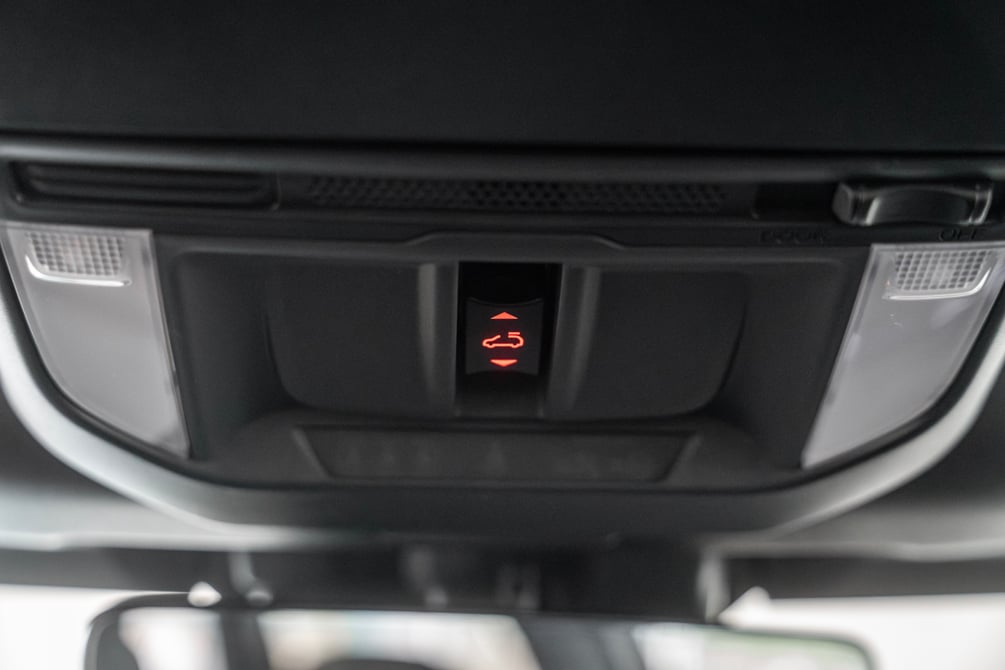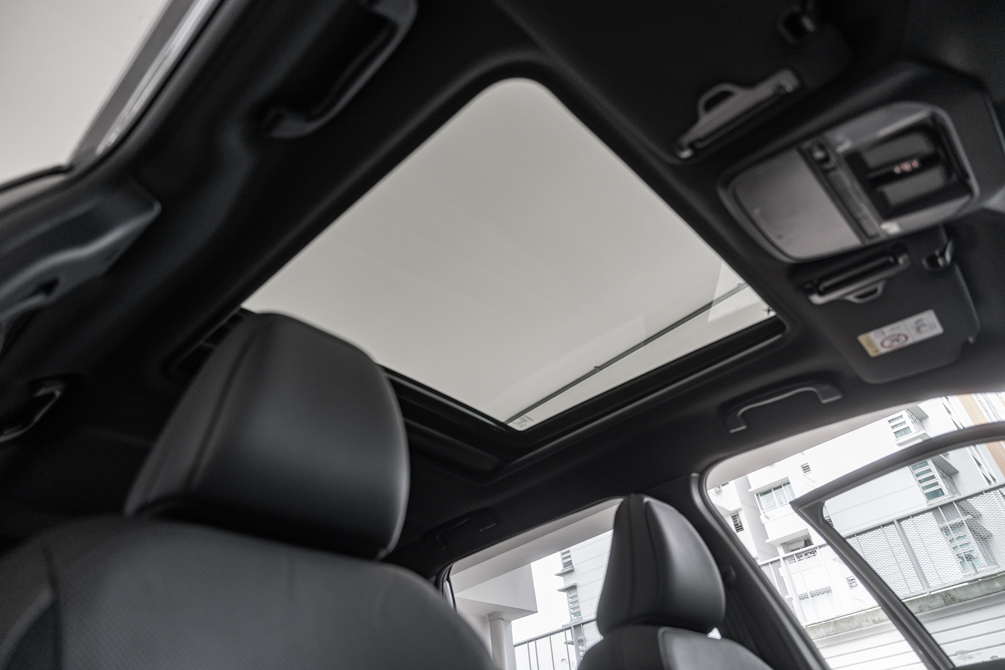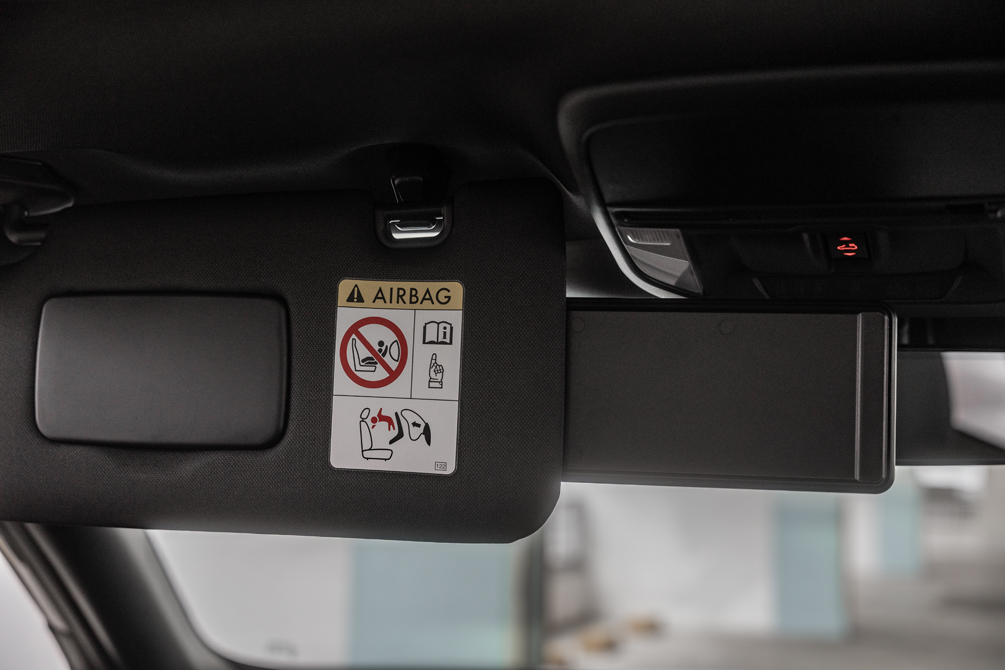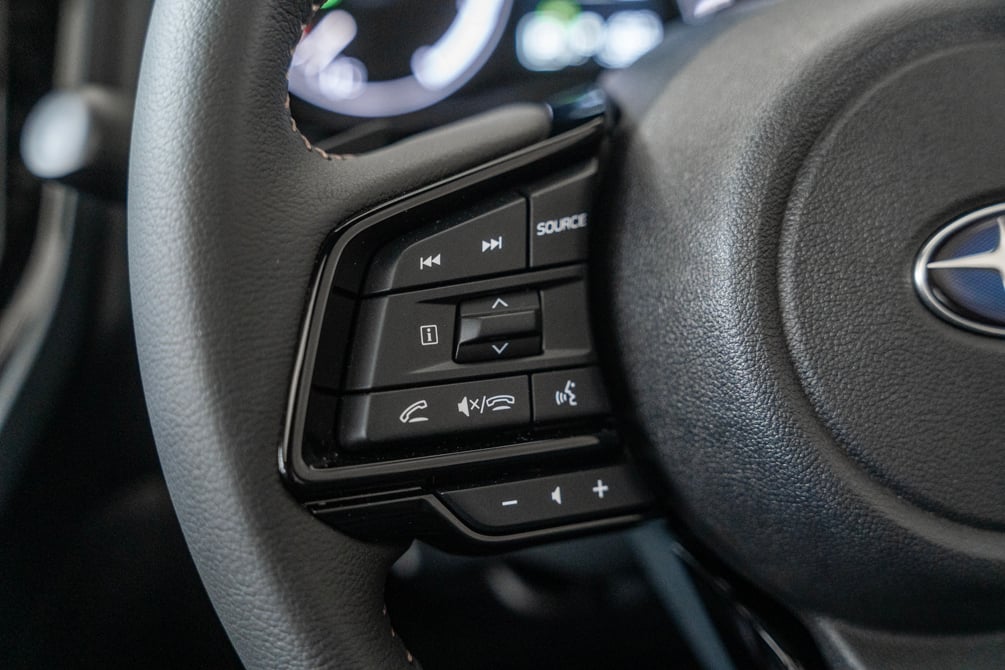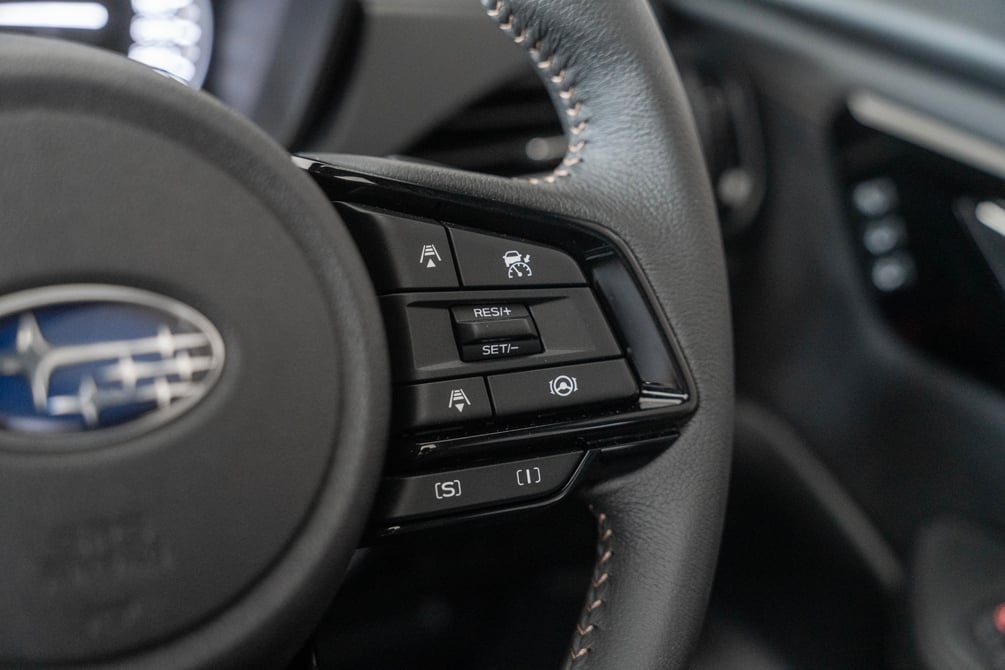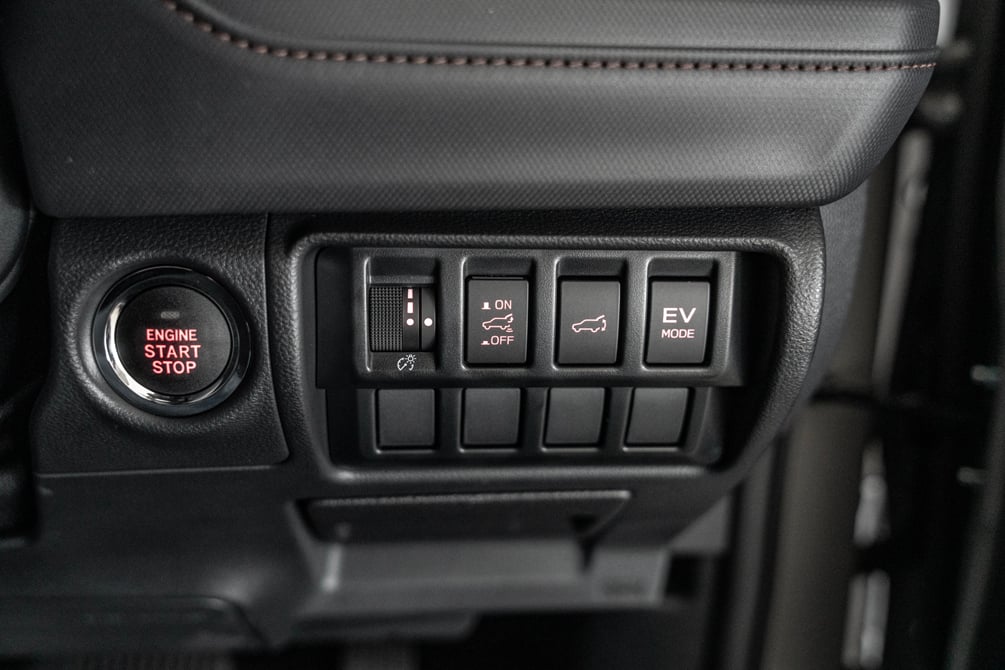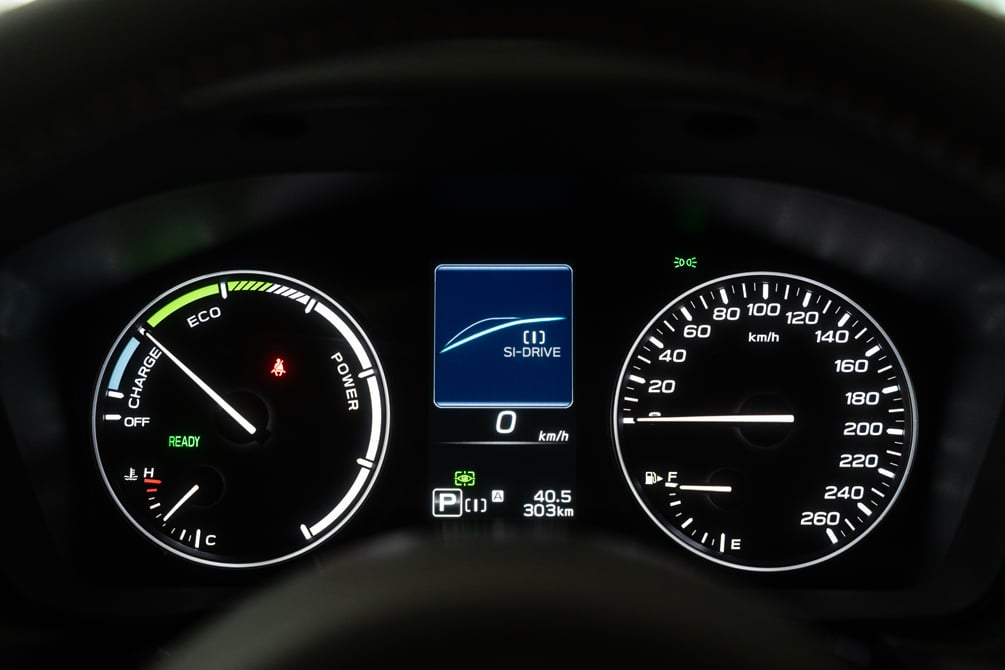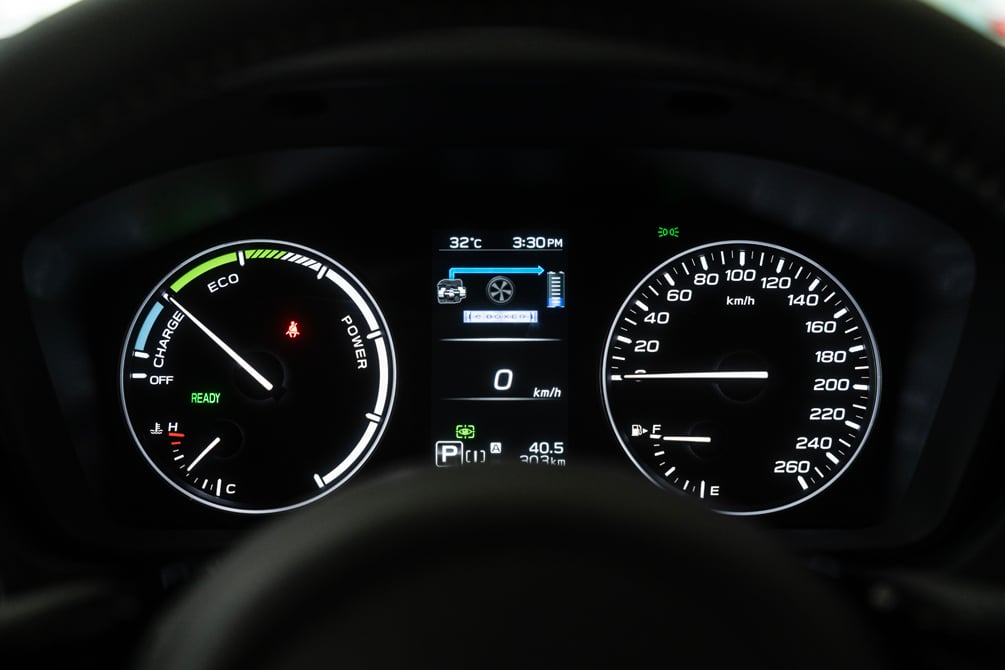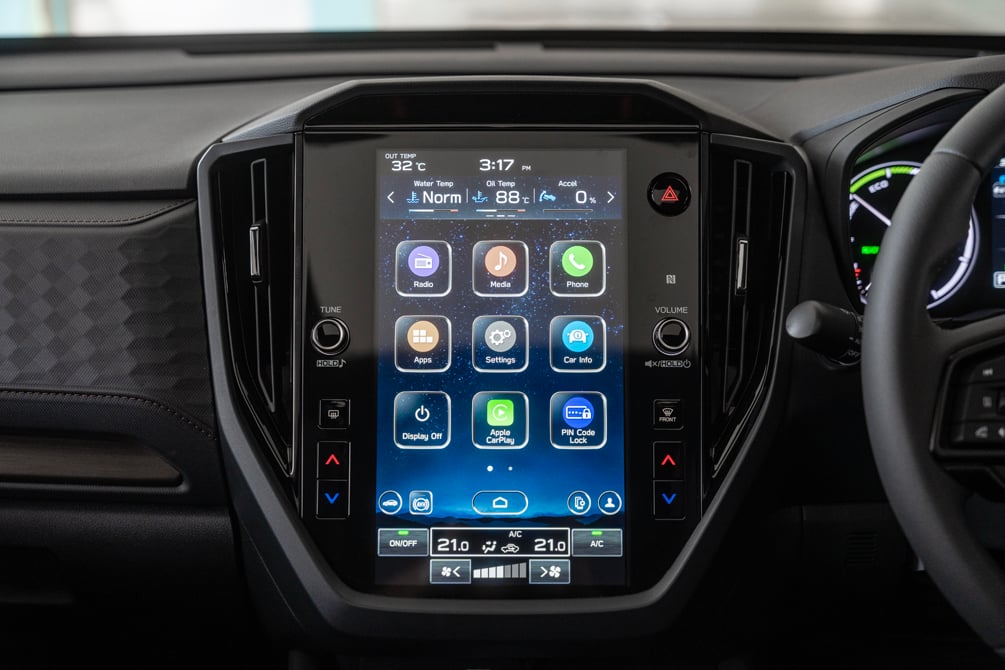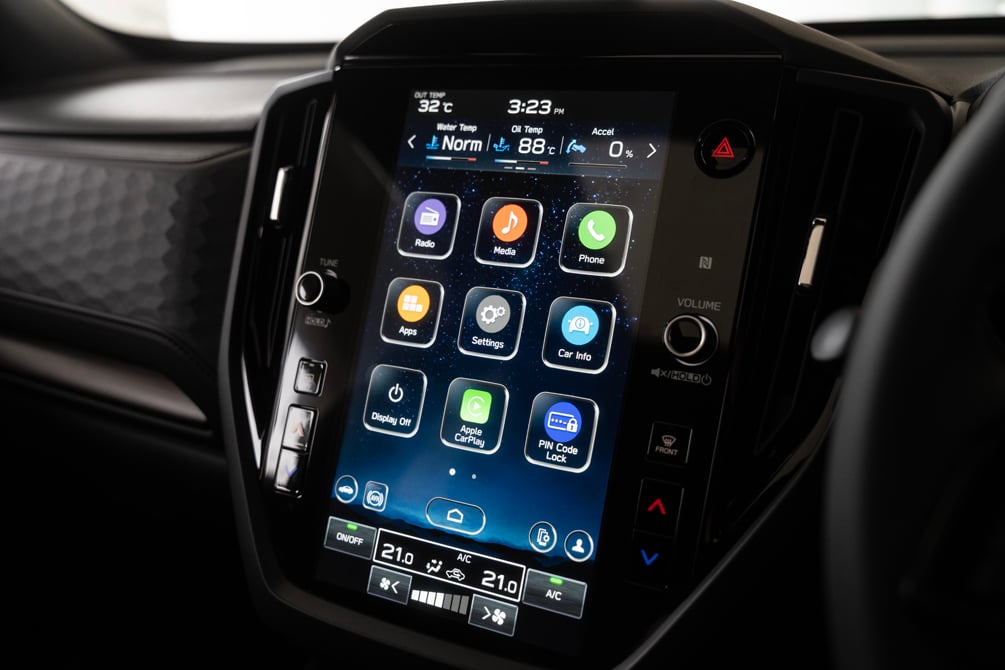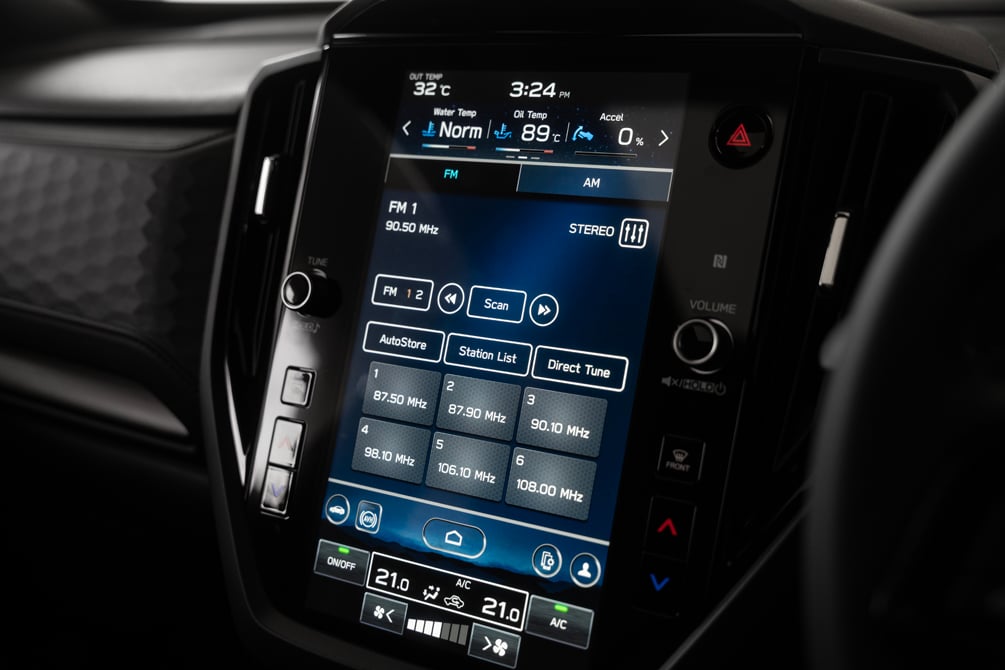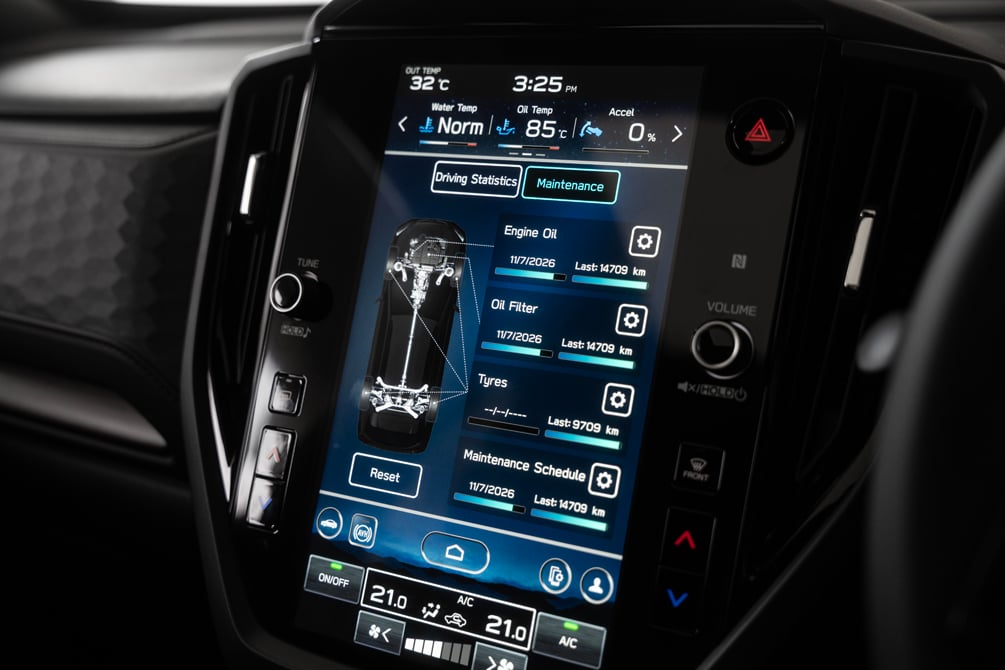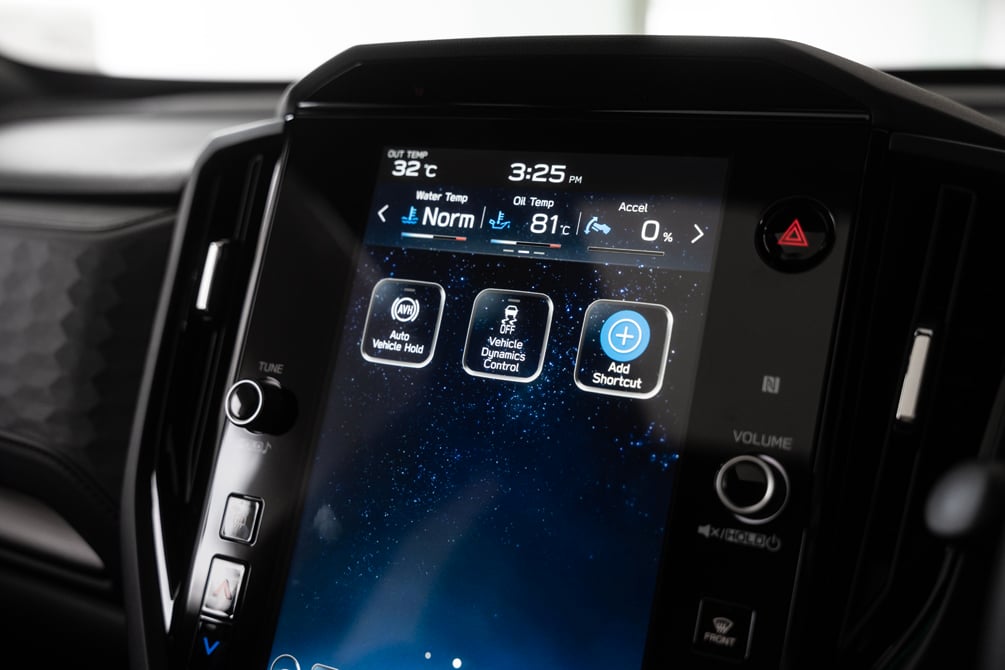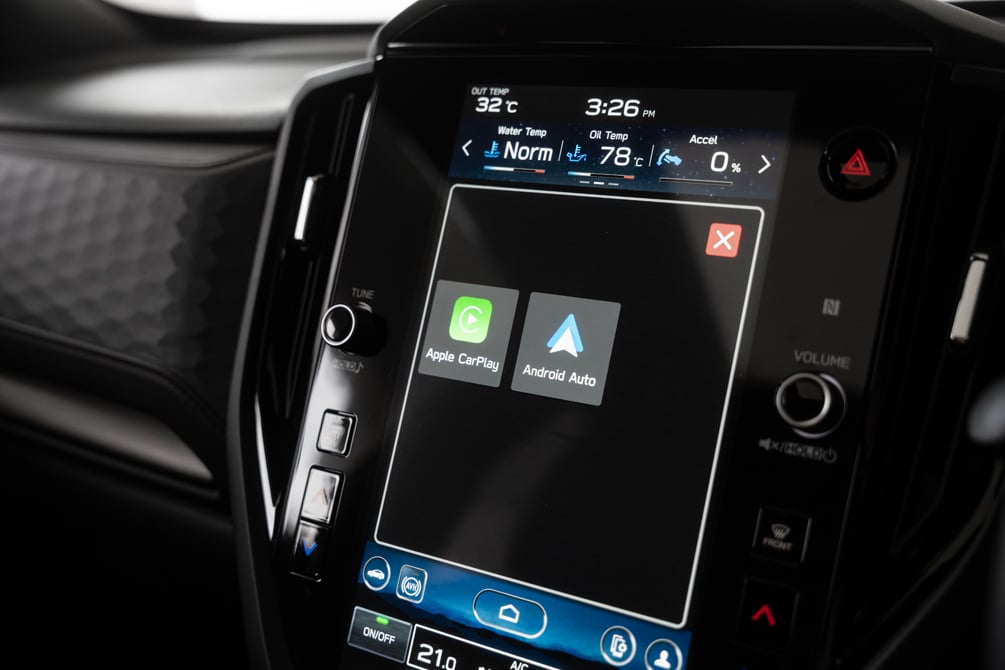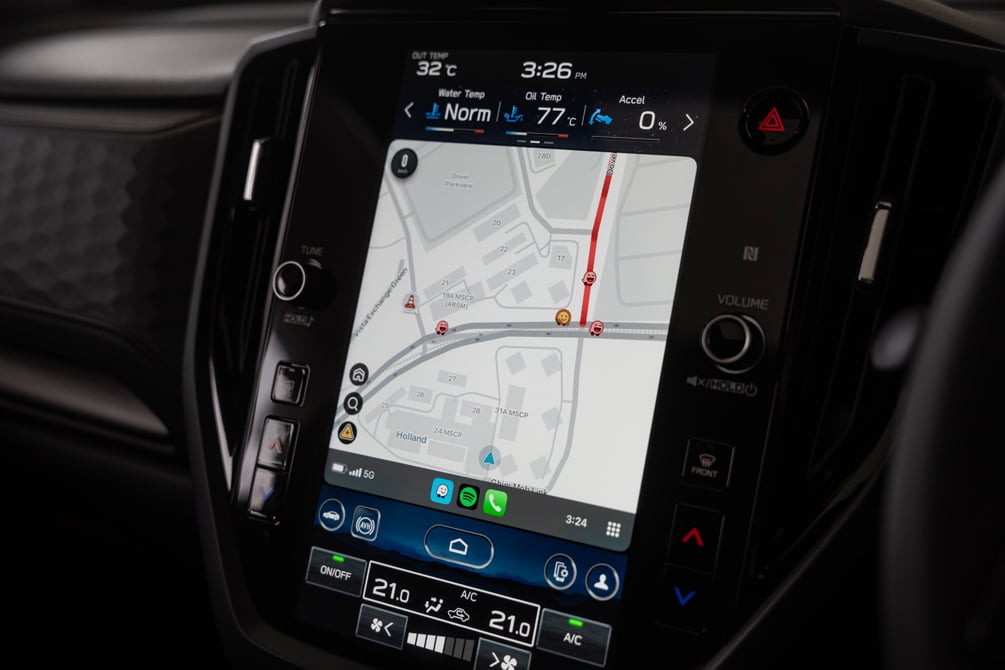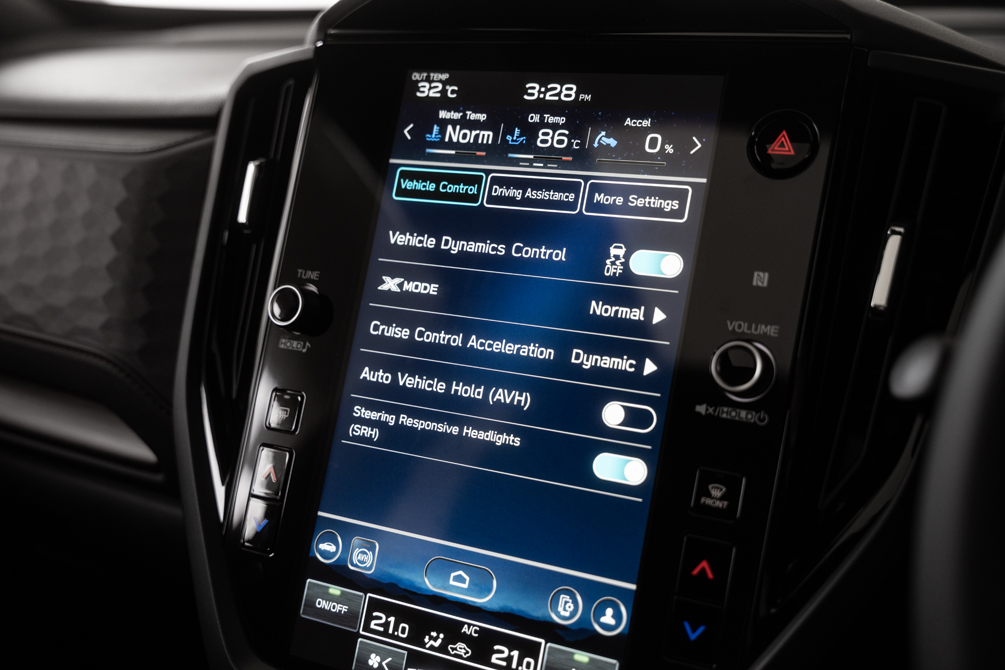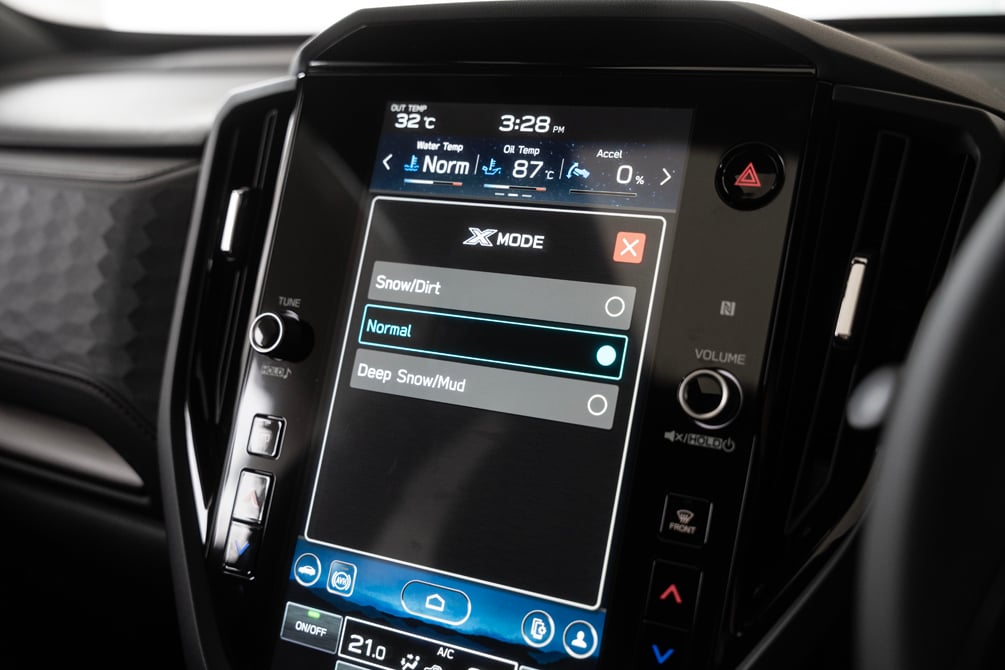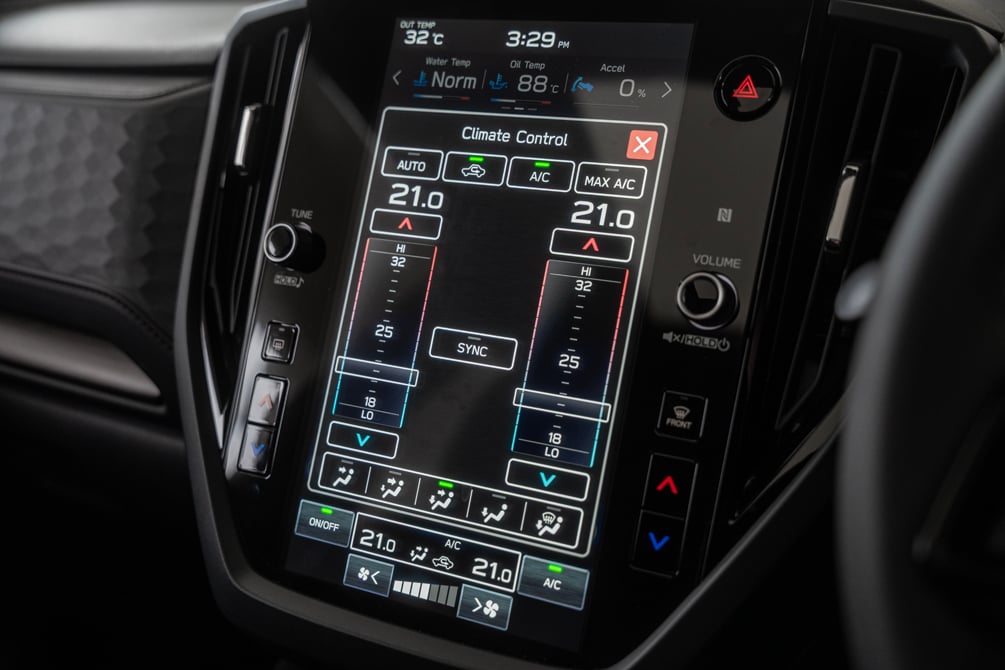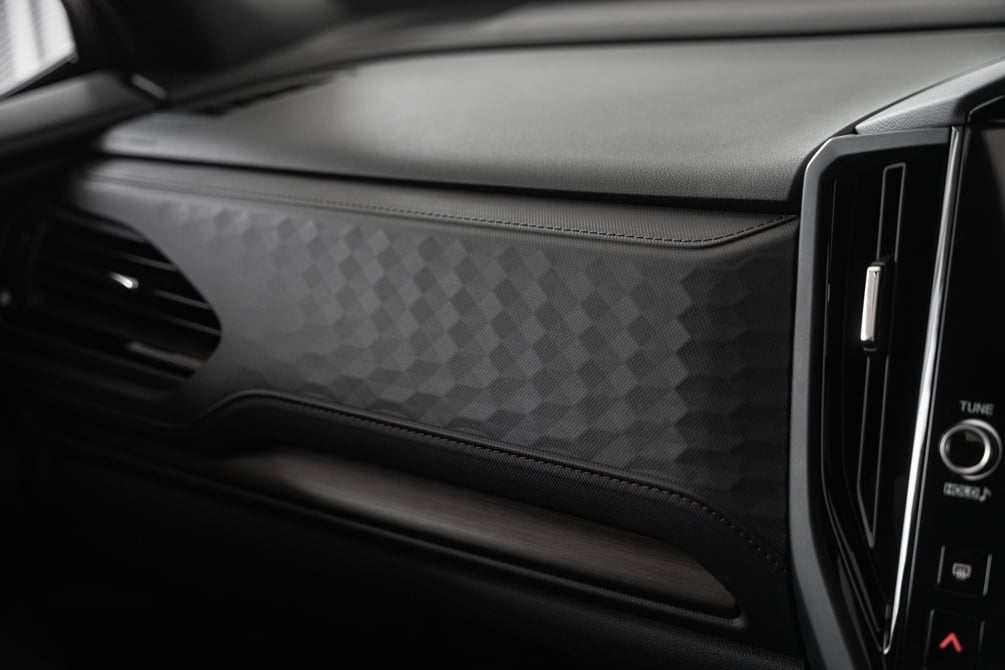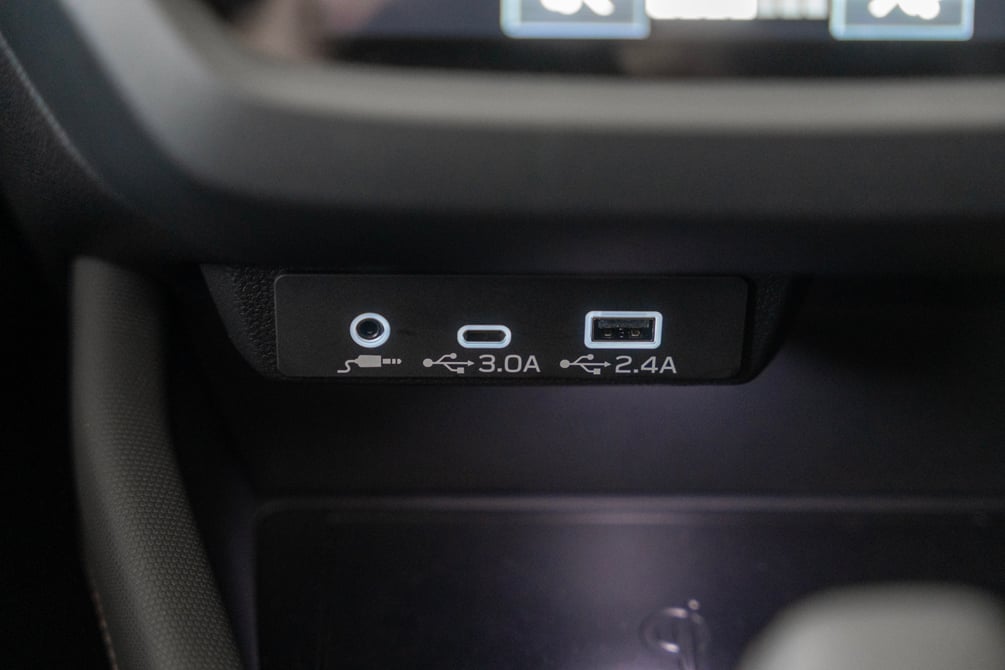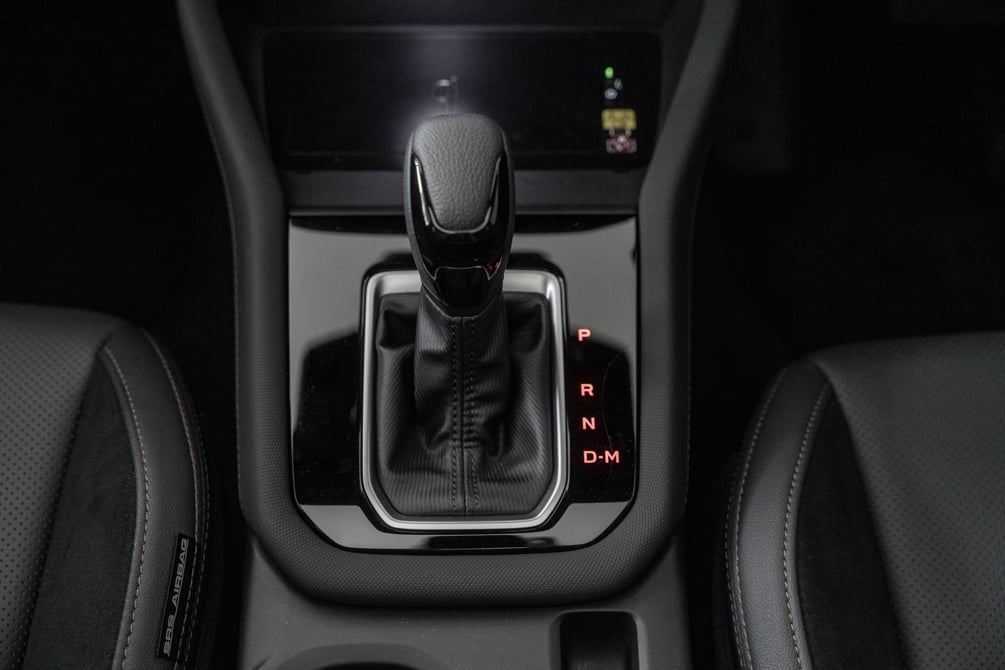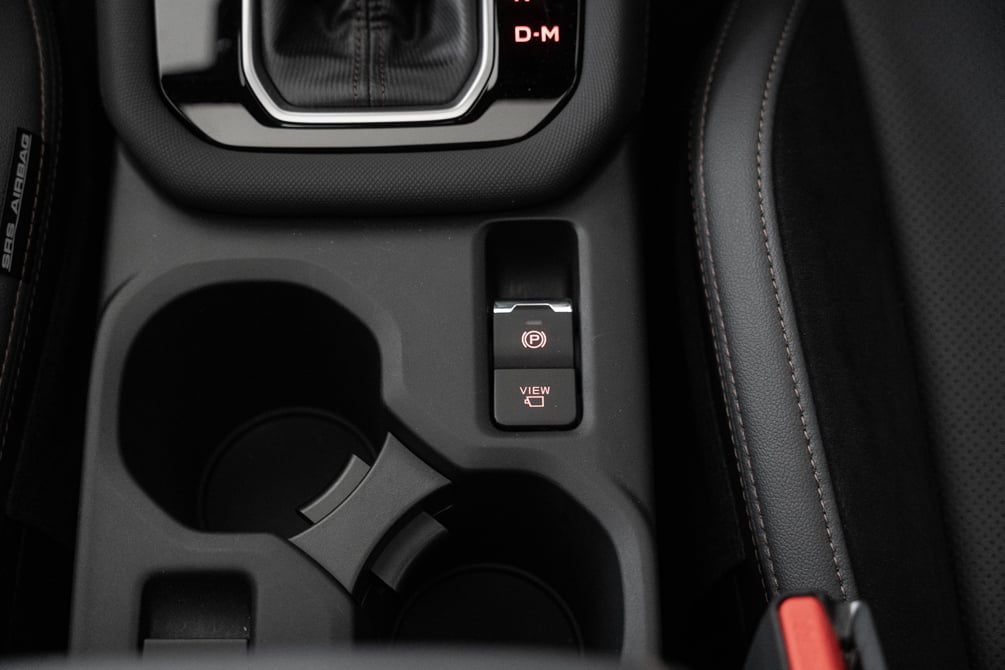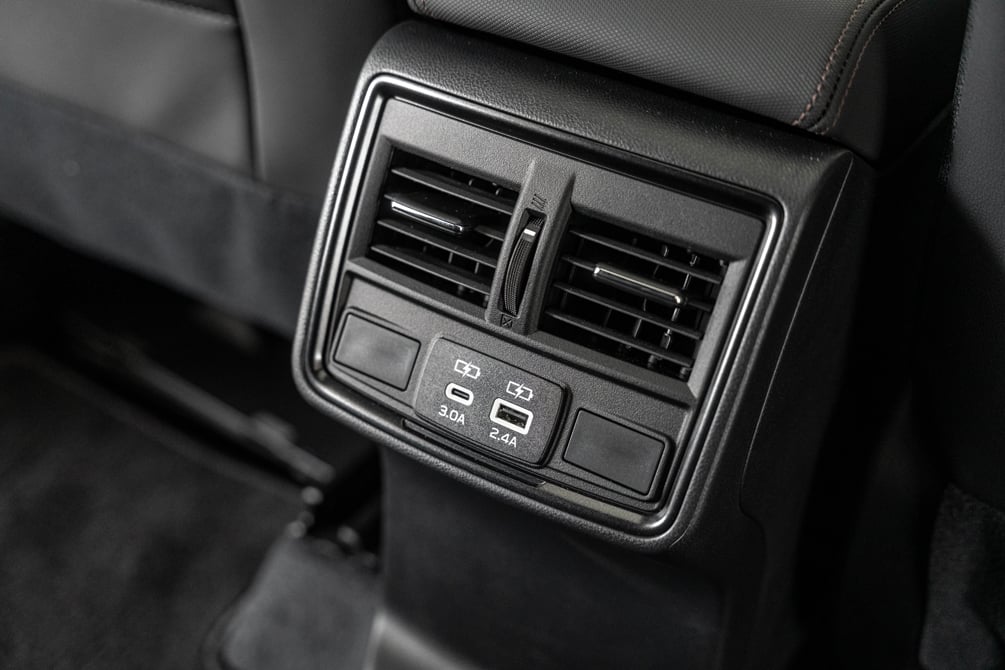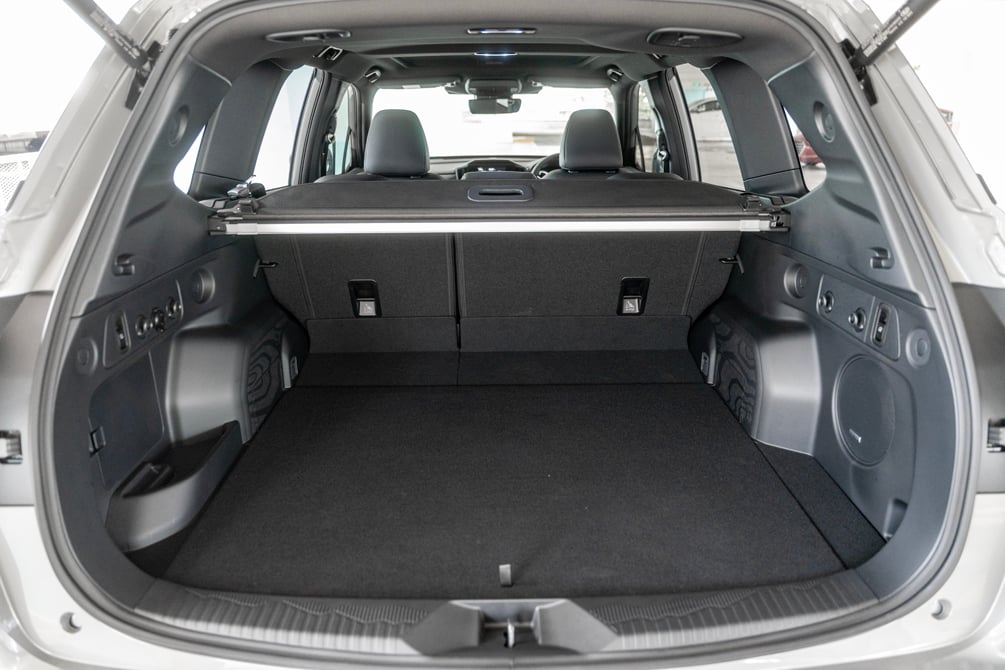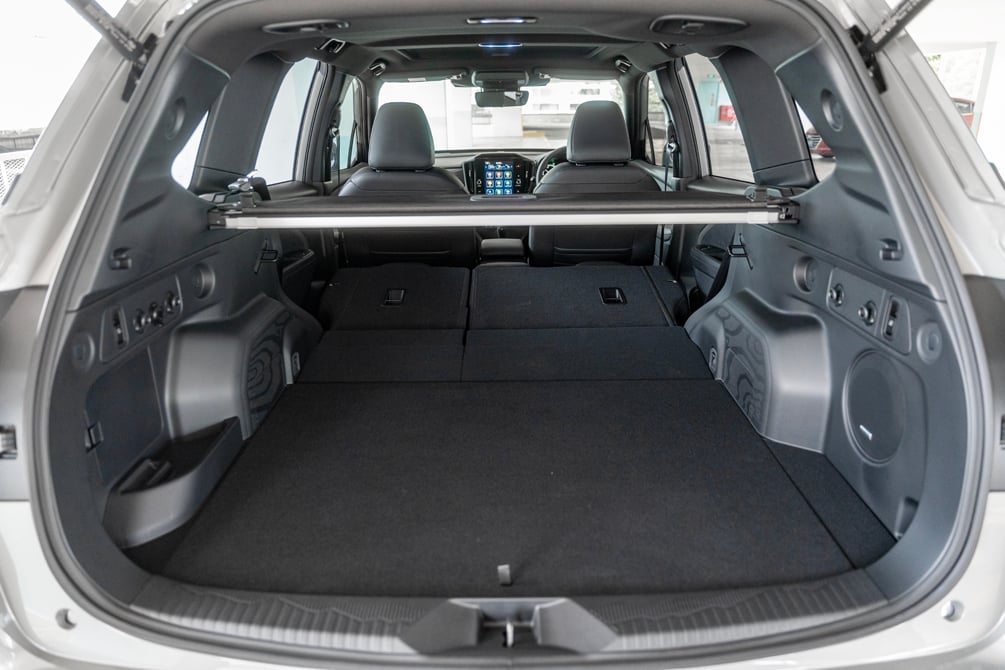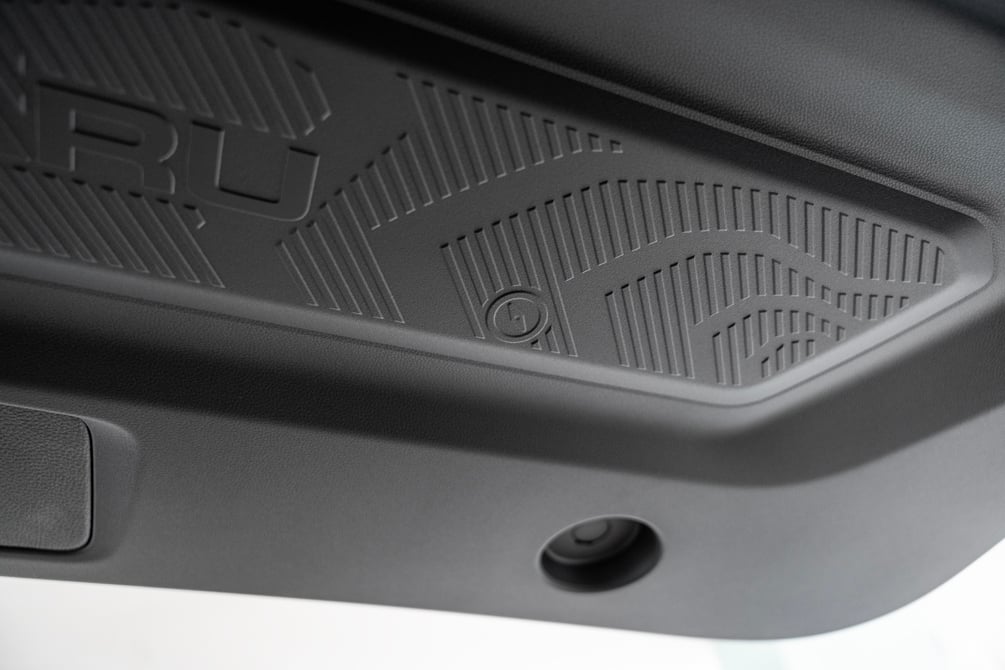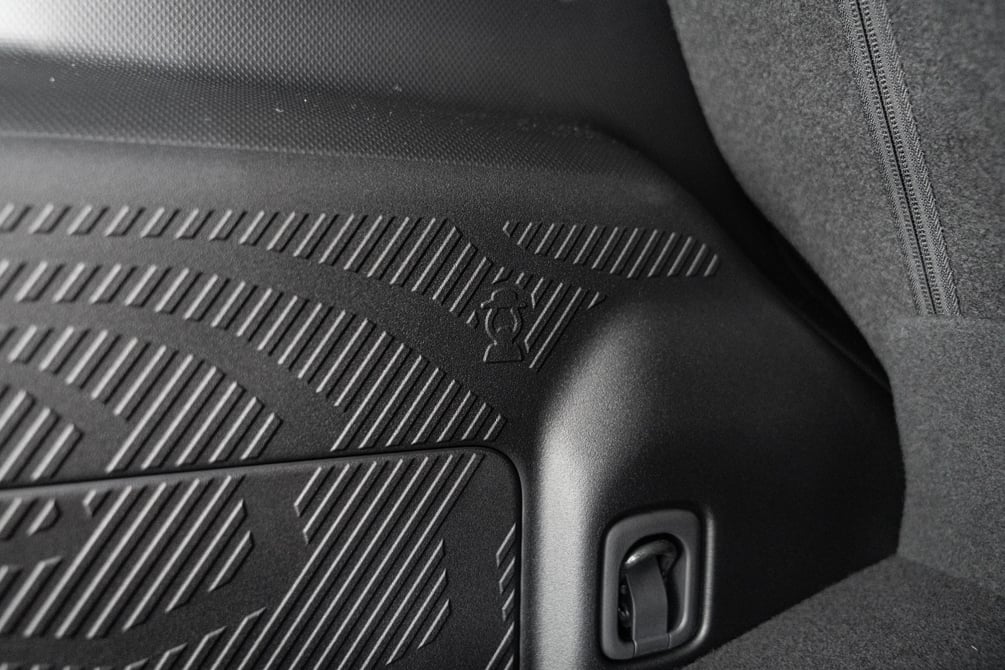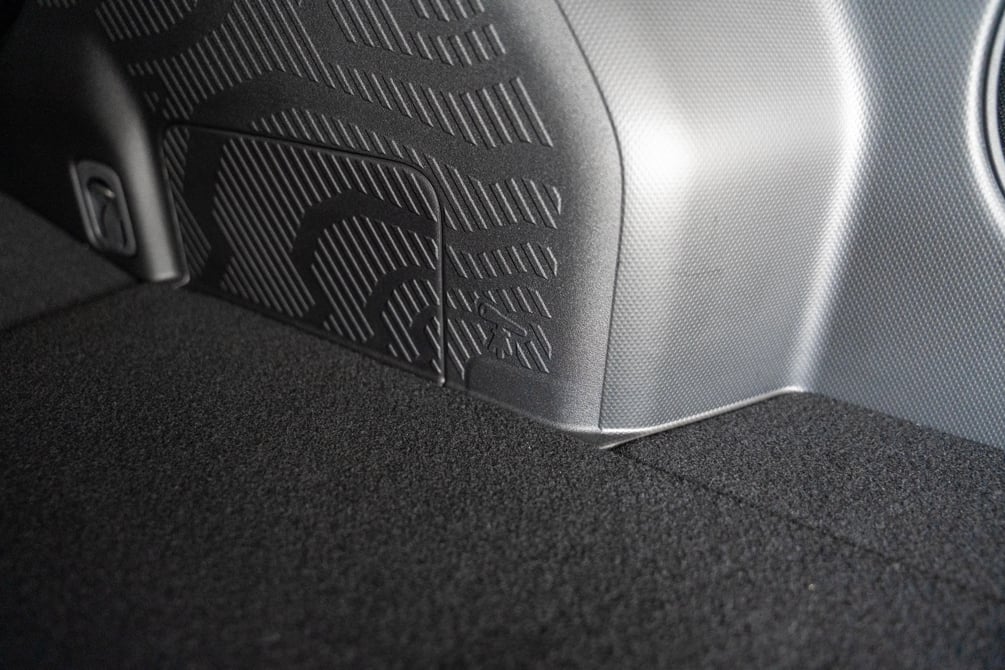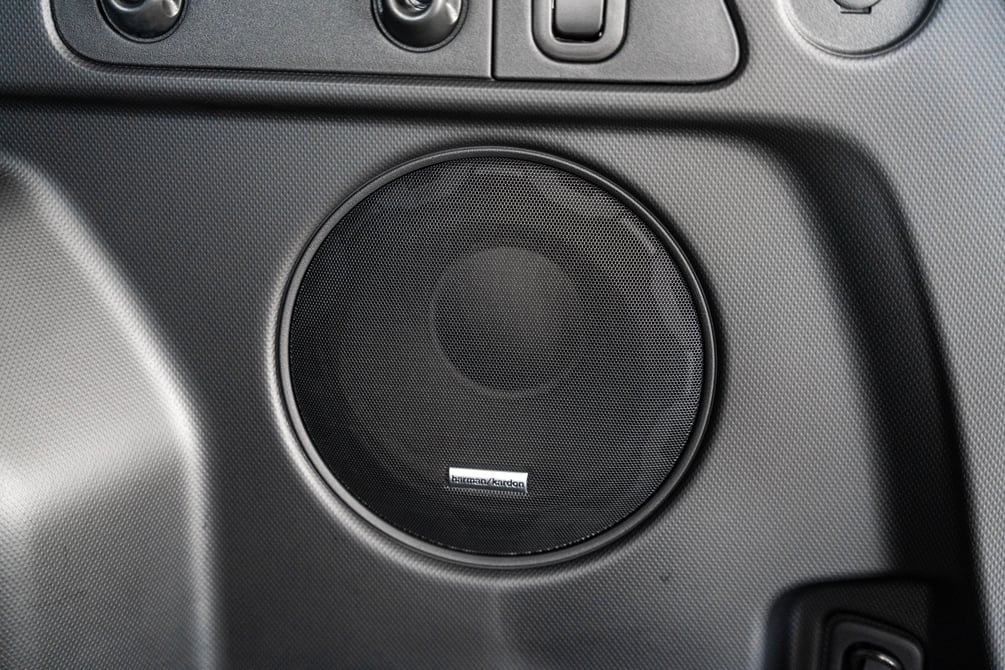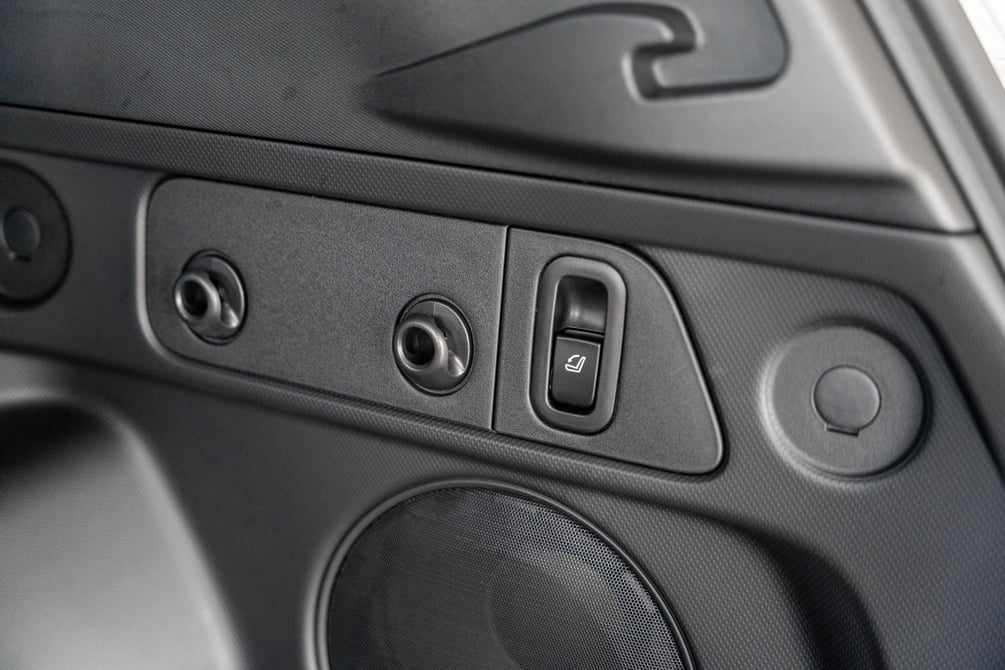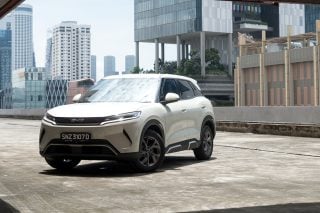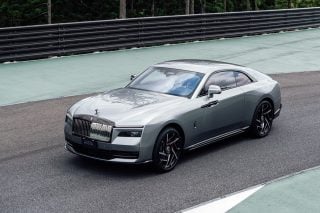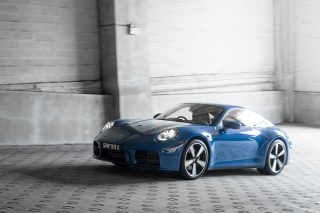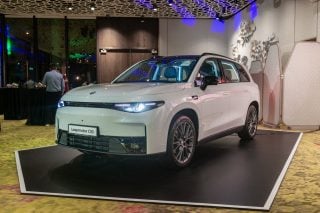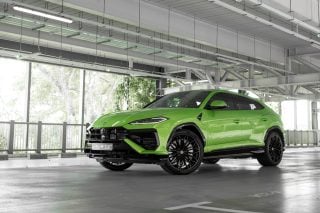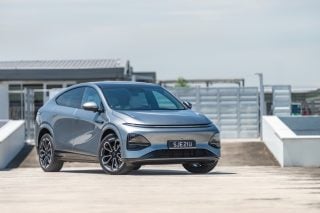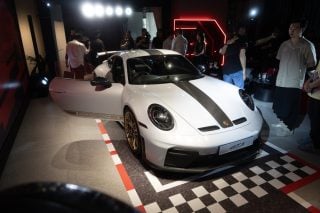The latest Subaru Forester is the brand’s first full-hybrid model that offers gains in performance, smoothness and efficiency, too.
Subaru has quietly launched the all-new Forester e-Boxer, but many might assume it’s just a heavily revised version of the the older Forester.
In reality, this is an all-new model and more significantly, Subaru’s first full hybrid. It is the brand’s contemporary offering in the “green” segment, and more importantly, it’s an SUV with its own distinct flavour.
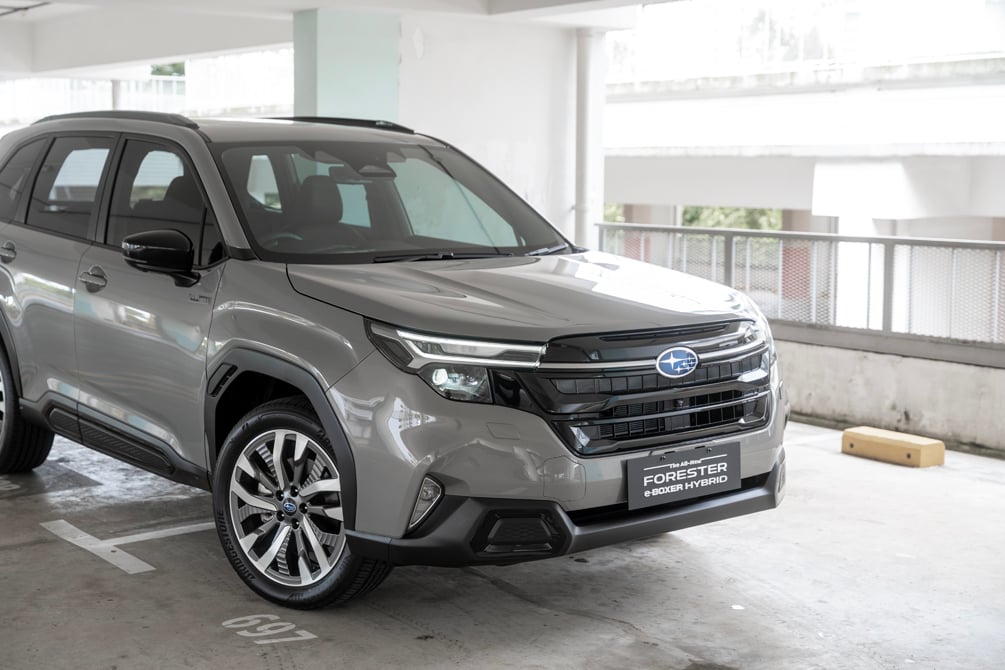
UNLIKE THE OTHERS
Chinese EVs are popular with many buyers. But most of them have generic designs that you wouldn’t give a second glance to because when you’ve seen one, you’ve probably seen another three like it.
Not so with the new Forester, which has its own visual identity. From afar, its tall and boxy silhouette is unmistakable, especially to owners and fans of the model. But the styling is fresh and I daresay, handsome.
It still looks rugged with its large grille, big wheel arches and unpainted trimmings. But it’s also been refined. Smaller headlights and sleek DRLs that look integrated with the grille replace the previous units and their C-shaped DRLs.

The rear end remains angular, but like the front, features smaller and sleeker tail-lights. Subarus used to have more unconventional styling, but the new Forester is conventional-looking and that may broaden its appeal.
The interior will help in this regard, too. The cockpit is roomy and airy, with good forward and lateral visibility. The facial recognition system, which stores and automatically recalls your seat settings, works a treat. Families with more than one driver will appreciate it.
The infotainment system is easy to get to grips with thanks to the relatively simple menu layout, and wireless Apple CarPlay and Android Auto are standard. Interestingly, the air-con’s fan speed controls have been digitised, but the temperature and de-misting functions still have physical switches.
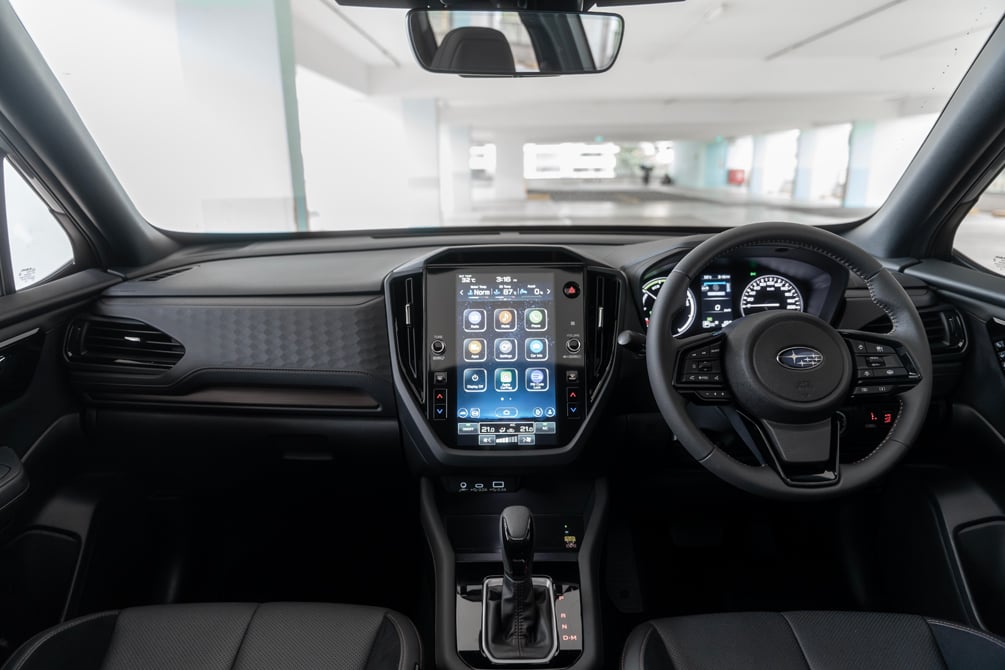
Although the SUV’s wheelbase remains unchanged at 2,670mm, both headroom and legroom are generous, and the floor protrusion is minimised. However, there’s been no improvement to practicality, as the door bins still cater more to bottles than loose items.
Also, because of the battery pack under the cargo area, boot capacity has been reduced from 509 litres to 487 litres with the rear seats in place. Folding the seat backs expands this to 1,877 litres.
Designers have injected a bit of fun into the new Forester by hiding ‘easter eggs’ that hint at its outdoorsy character. There’s a silhouette of a bird on the windscreen and sunroof, while symbols of a compass, telescope, and gas lantern can be found in the boot. There’s also a recurring topographical pattern on the door sills and the inside of the boot lid.
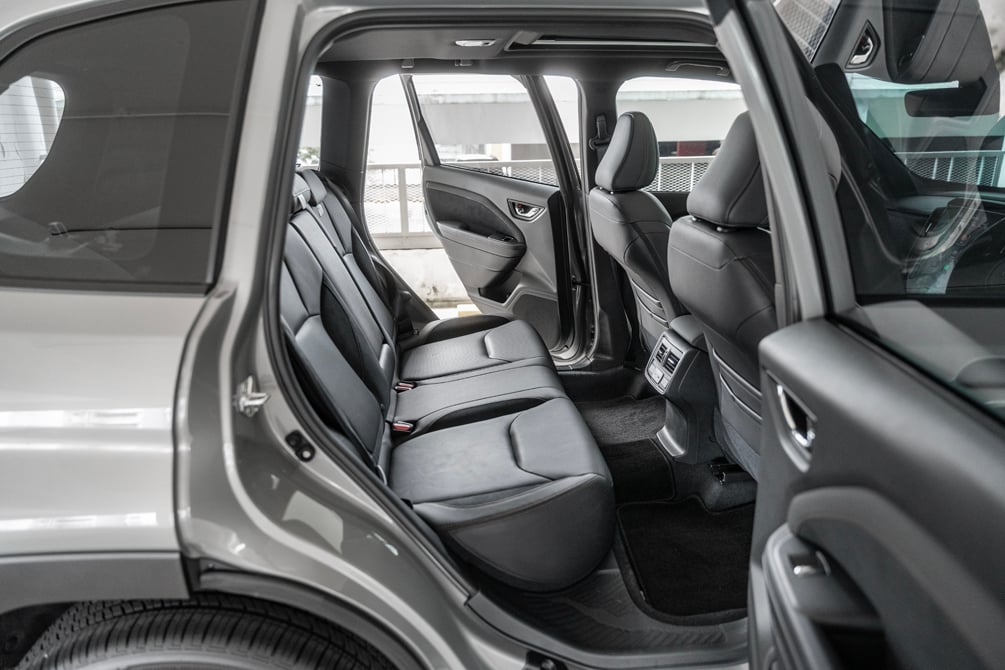
TECHY BITS
Unlike the preceding Forester with a mild hybrid system, the one in the latest one is a full hybrid. In a mild hybrid, there’s a starter-generator that draws power from a small battery pack to assist the engine and help reduce its load.
But unlike a full hybrid, mild hybrids cannot power the driven wheels. Apart from a larger 2.5-litre flat-four (it used to be a 2.0-litre), the new Forester also has a larger battery pack and more powerful electric motor delivering 90kW (121bhp) and 276Nm of torque, which can power the car solely on electricity under the right conditions.
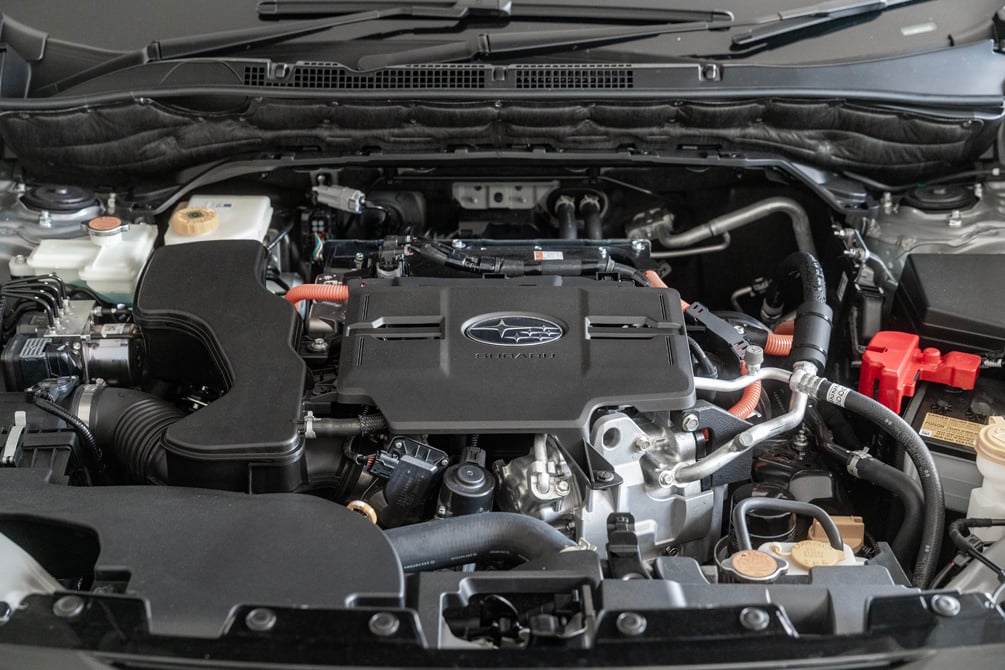
For instance, if the battery is full and you’re driving in a traffic jam, the electric powertrain takes over. You can also cruise at higher speeds on battery power alone.
But after covering around 65km in one afternoon, I only managed 11.1km/L – far from the claimed 16.9km/L average. Perhaps it was because the car hadn’t been run-in yet. Still, it betters the 9.8km/L my colleague achieved in the preceding Forester.
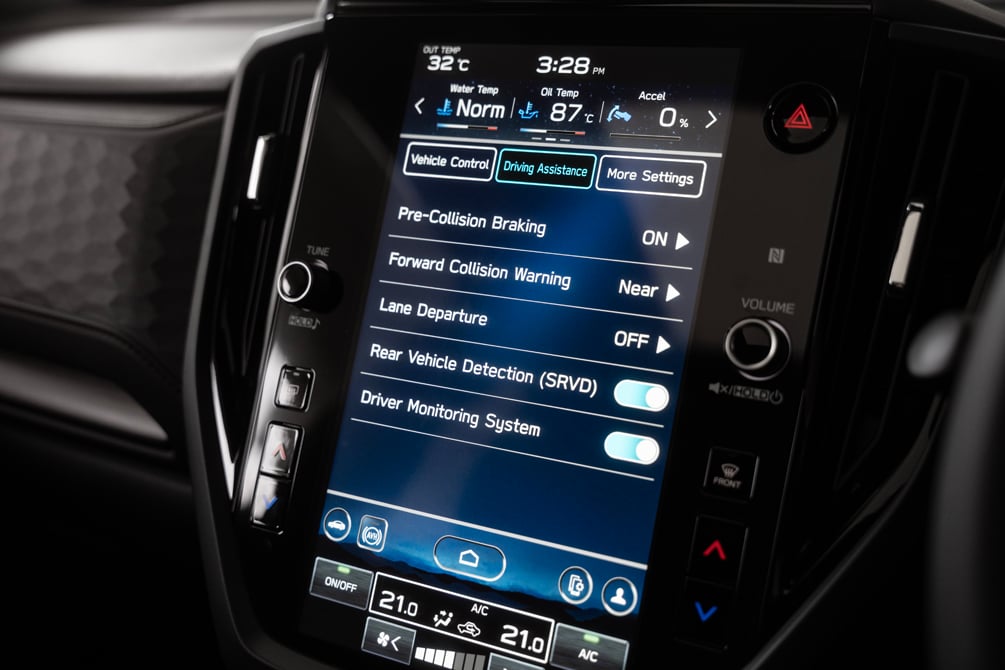
On the plus side, the meatier low-end results in the century sprint dropping from 11.8 seconds to 9.4 seconds. The Forester feels more capable than before, with more responsive acceleration and a stronger mid-range.
Complementing this is an improved Lineartronic CVT that integrates the drive motor, power generator, front differential, and electronic coupling. Compared to the one in the previous model, it feels less elastic and has less CVT drone. Instead, there’s a sort of rorty soundtrack that doesn’t sound as annoying.
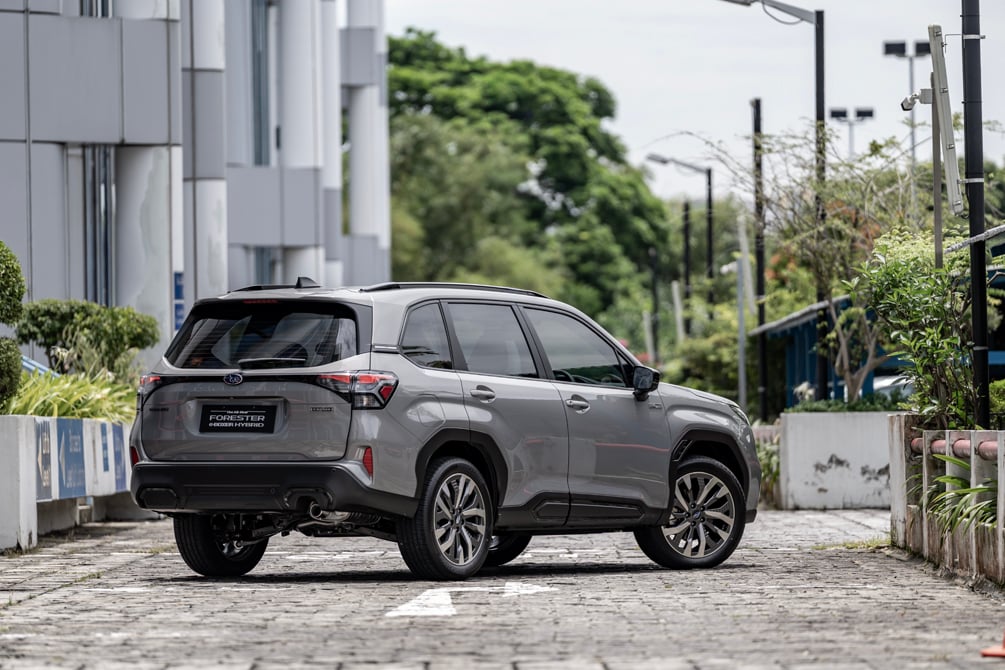
PONDER THESE
There’s plenty to like about the new Forester. It looks good, its cabin is functional and user-friendly, and despite the higher-than-expected consumption, it’s still more efficient than the older model.
At time of writing, the new Forester is priced at $219,800 with COE. It costs more than the 1.6-litre Hyundai Kona Hybrid and Kia Niro Hybrid, Cat A models that have better fuel economy but less performance. But it is a lot less expensive than its 2.5-litre rival, the Toyota RAV4 Hybrid.
The Forester’s draw is its character. The smooth flat-four, together with the symmetrical all-wheel drive, can’t be replicated elsewhere. It’s still approachable and driver-friendly, and with a new hybrid system, gives eco-conscious buyers something unique to consider.
This article was first published on Sgcarmart.
Subaru Forester e-BOXER Hybrid 2.5 (A)
ENGINE 2498cc, flat-4, 16-valves, petrol-electric hybrid
MAX POWER 194bhp at 6000rpm
MAX TORQUE 209Nm at 4500rpm
POWER TO WEIGHT 110.2bhp per tonne
GEARBOX CVT with 6-speed override
0-100KM/H 9.4 seconds
TOP SPEED 182km/h
CONSUMPTION 16.9km/L (combined)
PRICE INCL. COE From $219,800
AGENT Motor Image Enterprises

